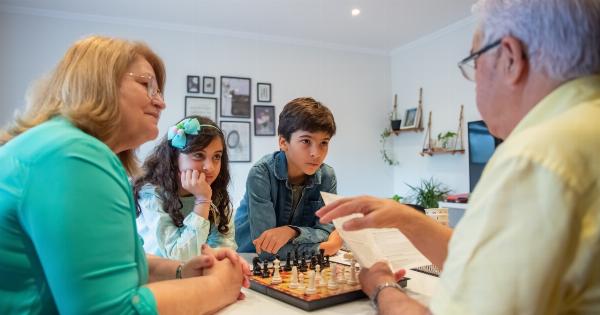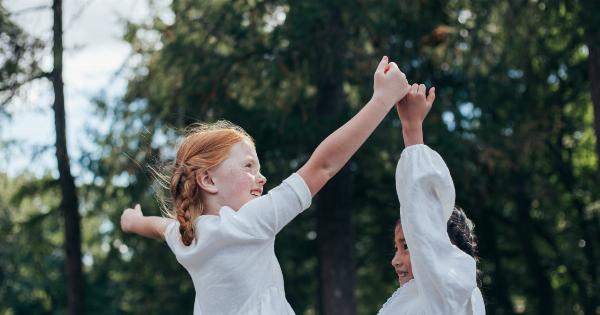As parents, we strive to provide our children with the best opportunities for growth and development. One essential aspect of a child’s overall well-being is their connection with nature.
In today’s digital age, children are spending more time indoors and less time exploring the outdoors. This shift has led to a disconnect between children and the natural world. However, with the help of visual aids, we can effectively introduce our children to nature and foster a lifelong love for the environment.
1. Importance of Connecting with Nature
Connecting with nature offers numerous benefits for children’s physical, mental, and emotional well-being.
Various studies have shown that spending time in nature can improve concentration, reduce stress, enhance creativity, and boost overall happiness. It also encourages active play, physical fitness, and the development of important motor skills. By helping children connect with nature through visual aids, we can unlock these benefits and provide them with a well-rounded upbringing.
2. Types of Visual Aids
Visual aids play a crucial role in helping children understand and engage with the natural world. Here are some effective types of visual aids:.
2.1. Books and Field Guides
Children’s books and field guides are excellent resources to introduce children to nature. Look for books that feature colorful illustrations, photographs, and descriptive information about different plants, animals, and natural environments.
Field guides are particularly helpful for older children who can identify and learn about different species on their own.
2.2. Nature Documentaries
Nature documentaries offer a captivating way to bring the wonders of the natural world into a child’s living room.
With stunning visuals and narrations, these documentaries provide an immersive experience that allows children to explore diverse ecosystems, animal behaviors, and environmental issues. Many documentaries also come with educational resources that further enhance the learning experience.
2.3. Virtual Reality (VR) Experiences
Virtual reality is an emerging technology that can transport children to different natural landscapes without leaving their homes.
VR headsets allow kids to explore realistic environments, interact with virtual animals, and learn about various ecosystems firsthand. These immersive experiences can spark curiosity and promote a deeper connection with nature.
2.4. Nature-based Apps
In today’s digital era, there are numerous nature-based apps available for smartphones and tablets. These apps offer interactive experiences, such as identifying plants and animal species, bird-watching, or participating in virtual nature walks.
They provide a convenient and engaging way for children to connect with nature, even when they cannot be outdoors.
3. Incorporating Visual Aids into Daily Life
To help your child connect with nature using visual aids, consider these practical tips:.
3.1. Create a Nature Corner
Designate a dedicated space in your home as a nature corner. Fill it with books, field guides, and other visual aids that showcase the natural world.
Encourage your child to spend time in this corner, exploring the resources and discovering new facts about nature. Make it an inviting and cozy space that sparks their curiosity.
3.2. Organize Nature Documentary Nights
Set aside specific nights for nature documentaries. Allow your child to choose the documentaries they are most interested in. Create a comfortable viewing area with cushions and blankets, and encourage discussions about the content afterward.
This activity not only educates but also strengthens family bonds through shared interests.
3.3. Plan Outdoor Trips Based on Visual Aids
Use books, documentaries, or virtual reality experiences as inspiration for outdoor trips.
If your child shows interest in a specific animal or environment, plan a visit to a local nature reserve, zoo, or botanical garden where they can see it in person. Being able to connect what they’ve learned through visual aids with real-life experiences deepens their understanding and appreciation of nature.
3.4. Engage in Citizen Science Projects
Many visual aids, such as apps and field guides, offer opportunities for citizen science participation. Encourage your child to engage in projects like bird counts, butterfly monitoring, or documenting plant species.
These activities not only reinforce the knowledge gained through visual aids but also allow children to actively contribute to scientific research.
4. Nurturing a Lifelong Love for Nature
Connecting with nature through visual aids should be seen as a stepping stone to nurturing a lifelong love for the environment. By incorporating these aids into daily life, parents can instill an appreciation for nature that extends beyond childhood.
Here are some additional tips:.
4.1. Encourage Outdoor Exploration
While visual aids are incredibly valuable, it is important to balance them with actual outdoor exploration. Encourage your child to spend time in nature, whether it’s in your backyard, a local park, or during family camping trips.
Hands-on experiences allow children to connect with nature on a deeper level and foster a sense of stewardship for the environment.
4.2. Foster Curiosity and Creativity
Ask open-ended questions, promote critical thinking, and encourage creativity when exploring nature with your child. Visual aids can serve as prompts for discussions and imaginative play.
By nurturing curiosity and creativity, you are instilling a lifelong love for learning and exploration.
4.3. Be a Role Model
Children often look up to their parents as role models. Show your child your own love and respect for nature by spending time outdoors, practicing sustainable habits, and committing to environmentally-friendly actions.
Your enthusiasm will inspire and motivate your child to develop their own connection with nature.
Conclusion
Helping your child connect with nature through visual aids is a powerful way to introduce them to the beauty and importance of the natural world.
By utilizing books, documentaries, virtual reality experiences, and nature-based apps, parents can bridge the gap between their children and nature. It is through this connection that children can reap numerous physical, mental, and emotional benefits, while also developing a lifelong love for the environment.






























